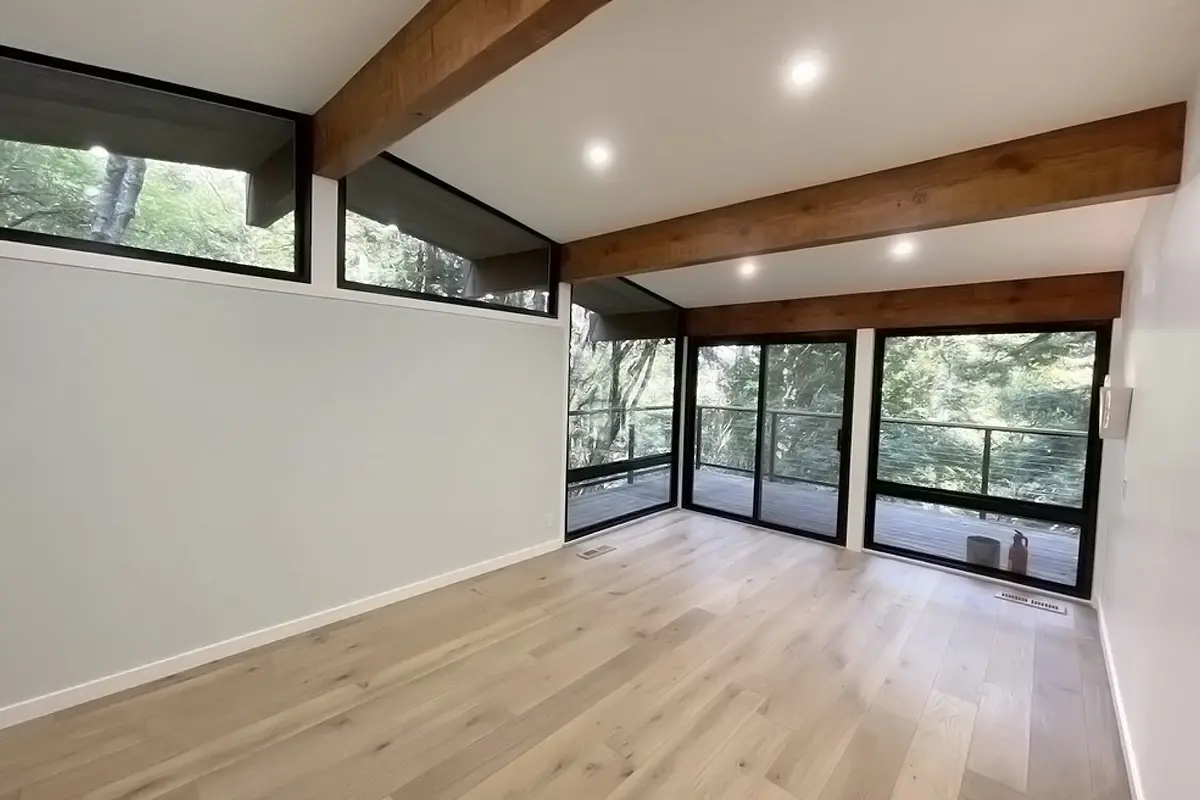As our parents age, many of us face the challenge of finding suitable housing for them. A popular and practical solution is to build an Accessory Dwelling Unit (ADU) on our property. An ADU not only provides a private space for your aging parents but also allows them to maintain their independence while staying close to family. In this article, we will explore essential design features to consider when building an ADU for your aging parents, ensuring comfort, safety, and independence.
1. Single-Level Living
The design of the ADU should prioritize single-level living to minimize the need for stairs and reduce the risk of falls. This means placing all essential living spaces, such as the bedroom, bathroom, kitchen, and living room, on one level.
Why It Matters
As people age, mobility can become an issue, making it difficult to navigate stairs. A single-level ADU eliminates this challenge, providing a safe and easily accessible living environment for your aging parents.
2. Wide Doorways and Hallways
Incorporating wider doorways and hallways into the ADU design is crucial for wheelchair accessibility and ease of movement. A minimum doorway width of 36 inches and hallway width of 42 inches is recommended.
Why It Matters
Wide doorways and hallways accommodate mobility aids and allow for easier navigation throughout the ADU. This design feature enhances independence and reduces the risk of accidents.
3. Zero-Step Entry
A zero-step entry is another essential design feature that enhances accessibility. This means the entrance to the ADU should be at ground level, eliminating the need for steps or ramps.
Why It Matters
A zero-step entry makes it easier for your aging parents to enter and exit the ADU safely, especially for those using mobility aids such as wheelchairs or walkers.
4. Accessible Bathroom
The bathroom is one of the most critical areas to focus on when designing an ADU for aging parents. Key features to include are:
- Grab Bars: Install grab bars near the toilet and in the shower to assist with balance and support.
- Roll-In Shower: A roll-in shower with a built-in seat and handheld showerhead provides a safe and accessible bathing solution.
- Raised Toilet Seat: A raised toilet seat makes it easier for your aging parents to sit and stand.
Why It Matters
An accessible bathroom promotes independence and safety, allowing your aging parents to maintain their personal hygiene with ease and dignity.
5. Open Floor Plan
An open floor plan is beneficial for aging parents as it reduces obstacles and provides ample space for mobility aids. It also enhances visibility and communication within the living area.
Why It Matters
An open floor plan creates a spacious and comfortable living environment, making it easier for your aging parents to move around and engage in daily activities.
6. Non-Slip Flooring
Selecting the right flooring material is essential for creating a safe and slip-resistant environment. Opt for non-slip flooring options such as:
- Vinyl: Durable, easy to clean, and slip-resistant.
- Cork: Provides cushioning and is naturally resistant to mold and mildew.
- Tile with Textured Finish: Offers good traction and is easy to maintain.
Why It Matters
Non-slip flooring reduces the risk of falls, a common concern for aging adults, and provides a safe walking surface throughout the ADU.
7. Lever-Handle Door Hardware
Replacing traditional doorknobs with lever-handle door hardware is a simple yet effective design feature that enhances accessibility.
Why It Matters
Lever-handle door hardware is easier to operate for individuals with limited hand strength or mobility, promoting independence and ease of use.
8. Ample Lighting
Good lighting is essential for safety and visibility, especially for aging eyes. Incorporate:
- Task Lighting: Direct lighting over workspaces like the kitchen counter and reading areas.
- Natural Lighting: Large windows and skylights to maximize natural light and improve mood.
- Motion-Activated Lights: For added convenience and safety, especially in hallways and bathrooms.
Why It Matters
Ample lighting reduces the risk of accidents and enhances visibility, making it easier for your aging parents to navigate the ADU and perform daily tasks.
9. Temperature Control Accessibility
Ensure that the heating, ventilation, and air conditioning (HVAC) system is easily accessible and controllable within the ADU.
Why It Matters
Maintaining a comfortable temperature is crucial for your aging parents’ well-being and overall comfort. An easily accessible and user-friendly HVAC system promotes independence and enhances the living experience.
10. Emergency Call System
Incorporate an emergency call system into the ADU design to provide peace of mind for both you and your aging parents.
Why It Matters
An emergency call system allows your aging parents to summon help quickly in case of an emergency, promoting safety and providing an added layer of security.
Conclusion
Building an ADU for your aging parents requires careful planning and consideration of their unique needs and challenges. By incorporating essential design features such as single-level living, wide doorways and hallways, zero-step entry, accessible bathroom, open floor plan, non-slip flooring, lever-handle door hardware, ample lighting, temperature control accessibility, and an emergency call system, you can create a safe, comfortable, and independent living environment for your aging parents.
Housing your aging parents in an ADU on your property not only provides them with a private and accessible living space but also allows them to maintain their independence while staying close to family. With thoughtful design and careful consideration of their needs, you can create a functional and supportive home that enhances their quality of life and brings peace of mind to your entire family.




